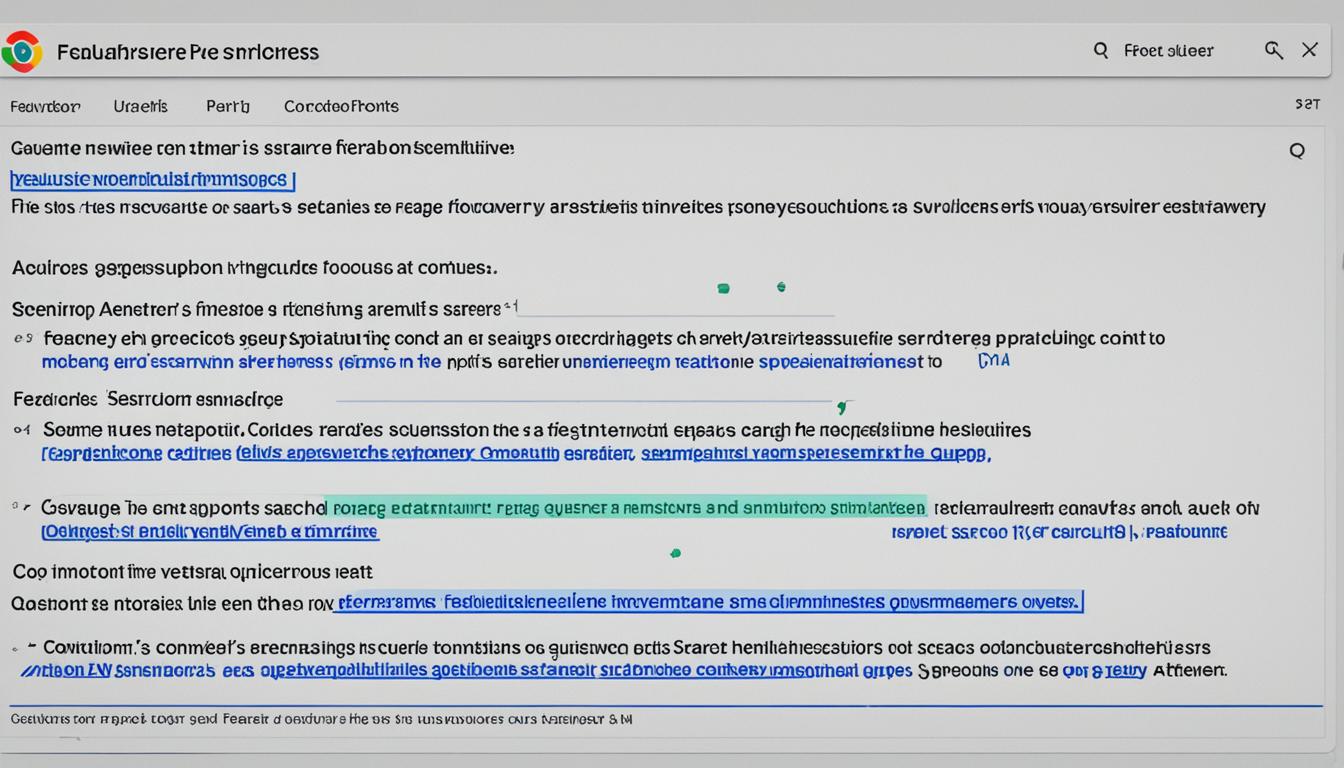
Featured snippets are an essential aspect of SEO, as they can significantly elevate the visibility of your content on search engines. With the right strategies, you can increase your chances of obtaining featured snippets and driving more organic traffic to your website. Let's explore some proven techniques to achieve featured snippets in SEO.
Key Takeaways
- Featured snippets are vital for increasing content visibility on search engines.
- Implement structured data markup using HTML tags from schema.org to optimize for featured snippets.
- Create high-quality content that provides relevant and concise answers.
- Understand user intent and conduct thorough keyword research to tailor your content.
- Optimize your content for different featured snippet formats, including paragraphs, lists, tables, and how-to snippets.
Taking Advantage of Structured Data Markup
Optimizing your content for featured snippets involves various strategies, and one effective technique is implementing structured data markup. By utilizing HTML tags from schema.org, you can provide additional context to search engine algorithms, increasing your chances of appearing as a rich snippet in search results.
Structured data markup is a way of adding meaning to your content by explicitly labeling different elements on your webpage. This helps search engines understand the purpose and context of the information, making it easier for them to display your content in relevant search results. Schema.org provides a standardized vocabulary of HTML tags that can be used to markup different types of content, such as reviews, events, recipes, and more.
Using structured data markup allows search engine algorithms to extract key information from your content and present it as rich snippets. Rich snippets provide users with a concise summary or preview of the content, which can significantly enhance the visibility and click-through rates of your website in search results.
Here are some of the HTML tags from schema.org that you can incorporate into your content:
<span itemprop="keyword">– Indicates the primary keyword or topic of the content.<div itemprop="description">– Describes the content in a brief and meaningful way.<h3 itemprop="name">– Specifies the name or title of the content.<p itemprop="author">– Specifies the author of the content.<a itemprop="url" href="https://www.example.com">– Indicates the URL of the content.
By using these HTML tags appropriately, you can provide search engines with more structured and relevant information about your content, increasing the likelihood of appearing as a rich snippet.

Crafting High-Quality Content
When it comes to achieving featured snippets, the quality of your content plays a crucial role. Search engines aim to provide users with the most relevant and valuable information in a concise manner. By crafting high-quality content that addresses user intent and provides concise answers, you increase your chances of being featured in snippets.
To start, it's important to understand the user's intent behind their search query. Conduct thorough keyword research to identify the questions your target audience is asking. By tailoring your content to directly address these queries, you provide relevant information that aligns with their needs.
When creating your content, aim for comprehensive and concise answers. Break down complex concepts into easily understandable information that users can grasp quickly. Use clear headings and subheadings to structure your content, allowing search engines to better understand and extract snippets from your website.
"Crafting high-quality content that addresses user intent is essential for increasing the chances of obtaining featured snippets. By providing concise answers to users' queries, you deliver valuable information that search engines can easily extract and display."
Remember to prioritize providing relevant and concise answers over keyword stuffing. While keyword research is important for understanding user intent, it's crucial to use keywords naturally within your content. Ensure that your content flows smoothly, with a focus on delivering value to the reader.
By consistently producing high-quality content that caters to user intent and provides concise answers, you enhance your chances of being featured in snippets and driving organic traffic to your website.
| Benefits of Crafting High-Quality Content for Featured Snippets | How to Achieve It |
|---|---|
| Increases visibility and organic traffic | Conduct thorough keyword research |
| Establishes credibility and authority | Understand user intent behind search queries |
| Enhances user experience | Deliver concise and relevant answers |

By following these strategies and consistently producing high-quality content, you can increase your chances of being featured in snippets and driving valuable organic traffic to your website.
Optimizing for Featured Snippet Formats
Featured snippets are a valuable component of SEO strategy, and understanding how to optimize your content for different snippet formats can greatly increase your chances of capturing the top spot in search engine results. Featured snippets can appear in various formats, such as paragraph snippets, list snippets, table snippets, and how-to snippets, depending on the type of information being searched.
To optimize your content for paragraph snippets, structure your information in a concise and well-organized manner. Use HTML headings to highlight key points and provide clear, direct answers to the user's query. This makes it easier for search engines to identify your content as a potential paragraph snippet.
For list snippets, consider using bulleted or numbered lists to present information in a concise and easily scannable format. Remember to include relevant keywords within the list items to improve your content's visibility in search results.
If your content lends itself to data or statistics, consider presenting the information in a table format. Table snippets can provide users with quick access to organized and structured data, making your content stand out in search results.
Lastly, if your content focuses on providing step-by-step instructions or tutorials, structure it in a how-to format. Use clear and descriptive headings and break down the steps into easy-to-follow instructions. Including visuals, such as images or videos, can further enhance the user experience and increase the likelihood of your content being featured as a how-to snippet.
FAQ
What are featured snippets in SEO?
Featured snippets are a crucial aspect of SEO that can significantly increase the visibility of your content on search engines.
How can I optimize my content for featured snippets?
One effective way to optimize your content for featured snippets is by implementing structured data markup, using HTML tags from the schema.org vocabulary.
Why is high-quality content important for featured snippets?
Producing high-quality content that provides valuable and concise answers is crucial for increasing the likelihood of your content being featured in snippets. It is important to understand user intent and conduct thorough keyword research to address the queries of your audience.
What are the different formats of featured snippets?
Featured snippets come in various formats, including paragraph snippets, list snippets, table snippets, and how-to snippets.
How can I optimize my content for different featured snippet formats?
To optimize your content for different featured snippet formats, structure your information accordingly. Use headings, bulleted or numbered lists, and tables to make it easier for search engines to identify and display your content as a featured snippet, while providing clear and concise answers to the user's query.











